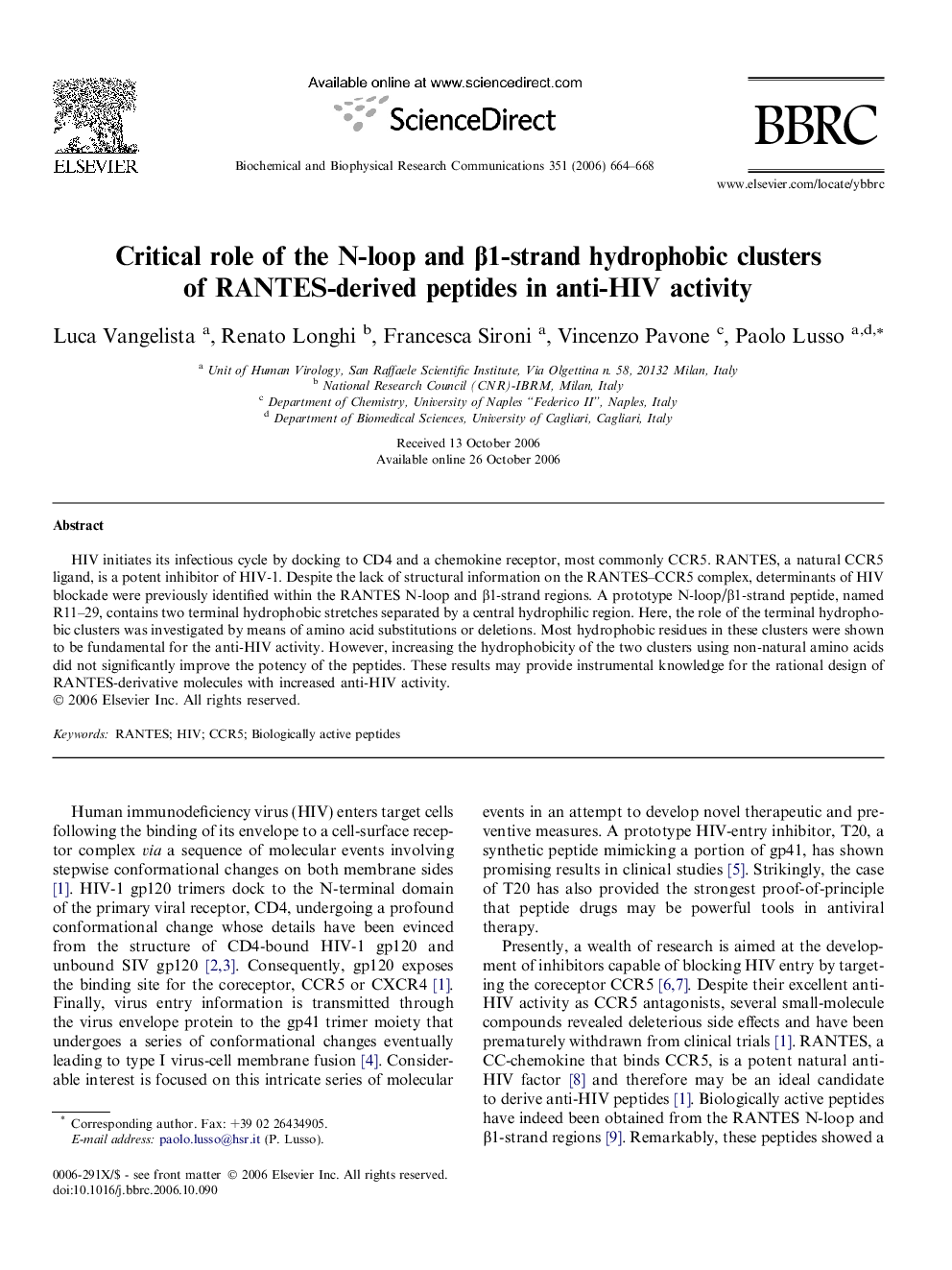| Article ID | Journal | Published Year | Pages | File Type |
|---|---|---|---|---|
| 1938198 | Biochemical and Biophysical Research Communications | 2006 | 5 Pages |
HIV initiates its infectious cycle by docking to CD4 and a chemokine receptor, most commonly CCR5. RANTES, a natural CCR5 ligand, is a potent inhibitor of HIV-1. Despite the lack of structural information on the RANTES–CCR5 complex, determinants of HIV blockade were previously identified within the RANTES N-loop and β1-strand regions. A prototype N-loop/β1-strand peptide, named R11–29, contains two terminal hydrophobic stretches separated by a central hydrophilic region. Here, the role of the terminal hydrophobic clusters was investigated by means of amino acid substitutions or deletions. Most hydrophobic residues in these clusters were shown to be fundamental for the anti-HIV activity. However, increasing the hydrophobicity of the two clusters using non-natural amino acids did not significantly improve the potency of the peptides. These results may provide instrumental knowledge for the rational design of RANTES-derivative molecules with increased anti-HIV activity.
